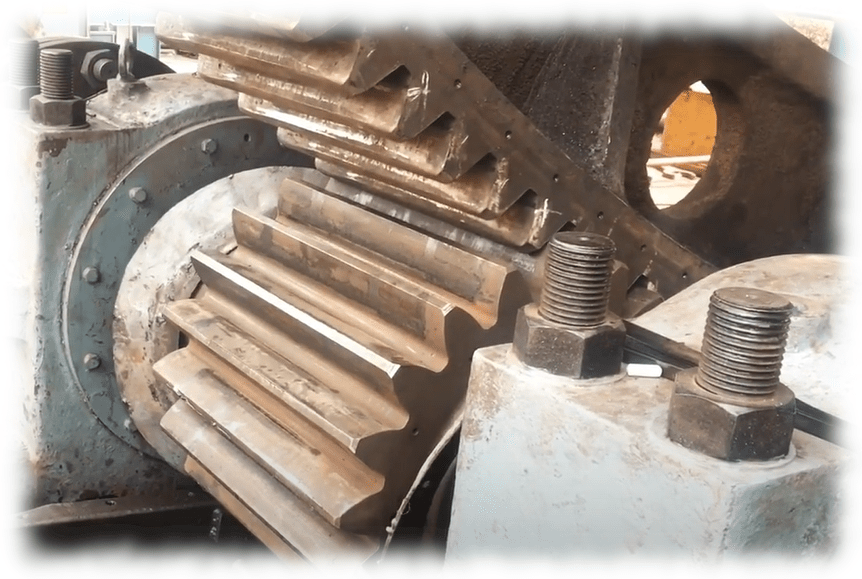Highway Truck Maintenance Management.
With this article, I hope to convey to you what
you should consider when developing a Maintenance Management Programme for a
Highway Tipper Truck.
I will use the 2021 Kenworth T880 Tipper as the
basis for this article and present it as more of an overarching level of
detail. I will support this article with all of the ‘nuts and bolts’ details
you might be looking for through this document: Truck
Asset Management Plan Details.
As many people are aware, being a truck
owner/operator entails a wide range of responsibilities.
Taking proper care of a truck that is your sole
source of income is critical to ensuring its longevity and optimal performance
while paying your regular bills and, of course, caring for your family.
Let us now look at the asset management
requirements of the aforementioned legendary Tipper.
Over the course of this document and the
previously mentioned ‘details’
document, I’ll be focusing on the features and
benefits of this high-quality truck, as well as what’s required to keep it in
good condition throughout its asset life.
I’ll assume that your T880 Tipper has a Cummins
X15 engine, which is a well-known 14.9-liter inline-six diesel engine, as well
as the incredibly dependable and well-known Allison 7-speed automatic
transmission, which is a superstar gearbox in my book.
Plenty of Comfort and Convenience
In The Cab.
The T880’s cab is thoughtfully designed to provide
comfort during long hours on the road.
The come standard with adjustable air-suspension
seats and lumbar support, you can find the perfect position for maximum comfort
very quickly.
Additionally (as you would expect with Kenworth),
these trucks offer climate control through air conditioning and heating, ensuring
all-weather comfort for the driver.
Routine Maintenance Suggestions
for the Cab of a T880 Tipper.
1.
Air Suspension Seats: Regularly inspect the air suspension seats
for any signs of wear, damage, or leaks.
Lubricate moving parts as recommended by the manufacturer. Check the air pressure and adjust it
according to the rider’s weight for optimal comfort and support.
2.
Air Conditioning and Heating: Clean or replace the cabin air filter
periodically to ensure efficient airflow.
Get a qualified AirCon Tech to inspect the climate control systems for
any leaks, damaged hoses, or malfunctioning components around every 4-6 months. Have these technicians verify that both
heating and cooling functions are working correctly.
3.
Instrumentation & Electronics: Keep an eye on the dashboard instruments,
including gauges, warning lights, and displays.
Address any malfunctioning indicators promptly. Regularly check the functionality of the
infotainment system, navigation, and other electronic features.
4.
General Cabin Maintenance: Clean the interior regularly to prevent dust
build-up and maintain a comfortable environment. Cleaning your Cab on a regular basis helps
with keeping the Air Conditioning System optimal as well. Inspect the upholstery, flooring, and cabin fixtures
for wear or damage. Lubricate hinges,
locks, and handles as needed.
Enhanced Safety Features.
The 2021 Kenworth T880 when configured as a Tipper
Truck is an absolute masterpiece of engineering and is equipped with various
safety features that prioritise the well-being of the driver and other road
users.
These trucks boast sound insulation to minimize
road noise, allowing for a quieter and more focused driving experience.
They also have complex reflector halogen
headlights provide excellent illumination, ensuring optimal visibility during
night time driving.
LED marker lights further enhance visibility,
making the truck easily noticeable on the road. The integrated turn signals in
the mirrors and reverse lights add an extra layer of safety during manoeuvring
and reversing.
Routine Maintenance Suggestions
for these safety features.
1.
Halogen Lights: Keep the lenses clean and free from dirt,
debris, and road grime. Regularly
inspect the bulbs for signs of dimness or discoloration and replace any faulty
bulbs promptly. Please be sure to avoid touching the bulbs with bare hands, as
oil from your skin can reduce their lifespan.
2.
LED Marker Lights: LED lights generally have very long lifespan
and should require little effort on your part.
Inspect the wiring and connectors for any damage or corrosion around
once per year. I would also ensure that
the seals around the lights are intact to prevent water ingress.
3.
Turn Signals: Check the turn signal bulbs regularly and inspect
the flasher relay and wiring connections.
Keep the lenses clean and replace any cracked or damaged lenses.
4.
Mirrors: Clean the mirrors regularly to maintain
visibility and naturally adjust the mirrors properly to minimize blind spots. Inspect mirror brackets and mounts for
stability and corrosion at the base attachments.
5.
Reverse Lights: Clean the reverse light lenses to ensure
maximum brightness. Inspect the wiring
and connectors and maybe consider upgrading to LED reverse lights for improved
longevity.
6.
Reverse Alarm: The backup alarm (reversing alarm) alerts
others when the truck is in reverse and is an important safety feature. It’s important to give it a regular test to
ensure it’s functioning correctly and avoid a rather nasty situation. Keep the alarm clean and free from debris.
Convenience and Connectivity on
board your Kenworth T880.
I’m sure most modern truck drivers rely heavily on
the various technologies we now have to stay connected and entertained on the
road.
The very reliable Kenworth T880 Tipper is no
exception and offers an array of infotainment system options, including a
quality radio, Bluetooth connectivity, and navigation capabilities. They also
started coming standard with a 15 inch digital display system as well.
The informative instrument cluster provides clear
displays for all essential information, allowing the driver to stay informed at
all times. Power outlets are also conveniently included, ensuring that devices
can be charged during long hauls.
The steering wheel is equipped with controls for
audio, cruise control, and other functions, providing easy access to essential
features without distractions.
Maintenance Ideas for the Convenience
and Connectivity Features.
1.
Infotainment System: The infotainment system, including the radio,
Bluetooth connectivity, and navigation, enhances the driving experience. While there are no direct maintenance
requirements for these features, here are some best practices: Keep the display screen clean to ensure clear
visibility. Regularly update the
navigation maps (if applicable) to stay accurate. Pair your Bluetooth devices securely to
prevent connectivity issues.
2.
Power Outlets: The
power outlets are essential for charging devices like phones, tablets, or
laptops. Inspect the outlets
periodically for any damage or loose connections. Ensure that the fuse protecting the outlets
is functioning correctly.
3.
Cruise Control: Cruise control naturally helps maintain a
consistent speed on highways. No
specific maintenance is required for cruise control itself. However, ensure that the vehicle’s overall
engine and transmission maintenance is up-to-date for optimal performance.
4.
Audio System Functions on Steering Wheel: These controls allow you to adjust volume,
change tracks, and manage calls without taking your hands off the wheel. Inspect the buttons for wear or damage. Keep the steering wheel area clean to prevent
dust build-up.
Sustained Performance with your
2021 Kenworth T880.
As you would expect with anything that has the
Kenworth badge, these trucks are renowned for their exceptional performance and
reliability.
With a Cummins X15 engine and an Allison 7-speed
auto transmission, these trucks deliver plenty of power and efficiency.
Typically, the front Bridgestone tires are sized
at 385/65R22.5, while the rear tires are 11R24.5, offering optimal traction and
stability on various terrains.
These features, combined with the truck’s sturdy
construction and durable components, make it a top choice for truck owners/operators
who prioritise quality and performance.
Taking Proper Care of Your Bridgestone
Tires.
1.
Proper Inflation: Regularly check and maintain the correct tire
pressure. Under-inflated tires can lead to premature wear and reduced fuel
efficiency. Follow the manufacturer’s
recommended pressure for your specific load and application.
2.
Rotation: Rotate the tires regularly to ensure even
wear across all axles. Front and rear
axle tires wear differently, so rotating them helps extend overall tire life.
3.
Alignment and Balancing: Proper wheel alignment prevents uneven wear. Balancing ensures uniform weight
distribution, reducing vibrations and extending tire life.
4.
Avoid Overloading: Exceeding the tire’s load capacity can cause
excessive wear and damage. Ensure that
the truck’s weight distribution complies with the tire specifications.
5.
Inspect for Damage: Regularly check for cuts, punctures, bulges,
or sidewall damage. Remove any embedded
stones or debris to prevent further harm.
6.
Driving Habits: Avoid sudden stops, aggressive acceleration,
and sharp turns. Smooth driving reduces
stress on tires.
Should
I Replace Tyres With Retreads Or New Tyres?
I fully understand that sometimes, things are
tough and we need to make some tough decisions around routine Truck Costs.
I would just like to say though, when it comes to
deciding between new truck tires and retreaded truck tires, there are several
factors to consider and I will just offer info, not implied directive.
What Are The Typical Advantages
Of Retreaded Tyres for Trucks?
Cost-Effective: Retread
tires are generally cheaper than new tires and since they reuse the existing
tire casing, the cost savings can be significant.
Environmental Benefits:
Retreading reduces the carbon footprint. A study found that retreading light
commercial vehicle tires can reduce carbon dioxide emissions by approximately
26.4 kilograms (58.2 pounds) per tire.
Safety: Modern
retreading processes adhere to high standards of quality, ensuring that retread
tires are safe and reliable.
What Are The Normal Advantages Of Using New Tyres On
Trucks?
When it comes to highway trucks, opting for new
tires over retreaded ones is generally considered a safer and more reliable
option.
Below are just a few reasons for
this.
Tyre Integrity: New tyres
are manufactured with fresh materials, ensuring their structural integrity.
They have no history of wear, damage, or previous use. In contrast, retreaded
tires reuse the existing casing, which may have hidden issues or wear from
previous usage.
Safety Concerns: Large
trucks operate under demanding conditions, carrying heavy loads and travelling
long distances. Safety is paramount.
New tyres provide consistent performance, better
traction, and improved handling. They are less likely to experience blowouts or
tread separation.
Quality Assurance: New tyres
undergo rigorous quality control during manufacturing. They meet industry
standards and are thoroughly inspected.
Unfortunately, retreaded tyres also have quality
checks, but there’s always some uncertainty about the condition of the original
casing.
Tread Depth: New tyres
start with full tread depth, providing better grip on wet or slippery roads.
As you might expect, retreaded tyres may have
shallower treads due to previous wear, affecting their performance in adverse
conditions.
Longevity: While
retreaded tyres offer cost savings, they have a limited lifespan. New tyres
typically last longer, reducing the frequency of replacements and maintenance
downtime.
Peace of Mind:
Choosing new tyres provides peace of mind for truck operators and fleet
managers. You know exactly what you’re getting, and there are no hidden
surprises.
Possible Tyre Casing Wear:
Even if the old tyre casing is in good condition, some wear has likely occurred
in its cords and infrastructure. This wear may lead to issues down the road.
Limited Lifespan Of Retreads:
While retreads can extend the life of a tyre, they still have a finite lifespan
compared to new tyres.
Replacement Tyre Brand Variety:
If you choose new tyres, you’ll have a wide variety of brands and types to
choose from.
This allows you to find the perfect fit for your truck
fleet’s specific needs.
When you opt for a retread, you will possibly just
receive that applicable option that the garage or tyre business has available.
Tyre Longevity: New tyres
typically offer a longer lifespan compared to retreads.
Ultimately, the all important
tyre decision depends on your priorities.
If times are tough and cost savings are paramount
and environmental impact issues are on your mind, then retread tyres may be a
good choice.
However, if you prioritise longevity then always
replacing old tyres with new might just be
the better fit for your needs.
Consider your budget, safety requirements, and
fleet usage when making the decision. And remember, professional advice from
experts in the industry can help guide your choice
How to Store Your Spare Truck
Tyres?
Only ever store your spare tires in a cool, dry
place away from direct sunlight. Avoid
stacking tires or placing heavy objects on them.
Cummins X15 Engine and Allison
7-Speed Auto Transmission Basics.
As I mentioned at the start of this document, you
will find some very detailed information for looking after this
model/type/configuration of truck on The
Maintenance Details Document.
In
a nutshell though, be sure to consider the following tasks.
1.
Regular Oil Changes: Follow the manufacturer’s recommended oil
change intervals for both the engine and transmission. Use high-quality oil that meets Cummins and
Allison specifications.
2.
Coolant and Filters: Maintain proper coolant levels and replace it
as needed. Change fuel filters, air
filters, and transmission filters at recommended intervals.
3.
Fluid Levels: Regularly check transmission fluid levels and
top up if necessary. Monitor engine
coolant levels and address any leaks promptly.
4.
Be Sure To Avoid Overheating: Ensure proper cooling system function. Monitor engine temperature and avoid
prolonged overheating.
5.
Inspect Belts and Hoses: Check for wear, cracks, or leaks in belts and
hoses. Replace any damaged components
promptly.
6.
Monitor Gauges and Alerts: Pay attention to dashboard gauges and warning
lights. Address any abnormal readings
immediately.
7.
Enging Using Habits: Although I have almost certainly mentioned
this top earlier in this article it is just so important to avoid excessive
idling or aggressive driving over the course of a diesel engine. Allow the engine and transmission to warm up
before heavy loads and try to only use them under load.
Remember that regular maintenance and attentive
care are crucial for maximizing the life of both your Bridgestone tires and the
Cummins X15 engine with the Allison transmission
Proper Asset Management For Your Kenworth
T880 Dump Truck,
Proper asset management/maintenance is essential
for truck owners/operators to ensure the longevity and optimal performance of
their vehicles.
These particular trucks offer a comprehensive package
of comfort, safety, convenience, and performance features that make it a
standout choice in the market.
By understanding how these trucks best work and
doing to bit of research to help you make sure that you implement the best necessary
maintenance practices, you can maximize the value and efficiency of your
investment in this style of quality truck.
Sustaining Asset Management
Framework For Your Truck.
The first step is just determining the Asset
Management Framework for your 2021 KENWORTH T880 Dump Truck.
It’s a complex task but roughly speaking, managing
a highway truck, such as the 2021 Kenworth T880 Tipper, requires a steady and
consistent approach towards care and maintenance that ensures safety,
reliability, and cost-effectiveness.
To achieve these goals, it is essential to
implement an overarching asset management framework that encompasses
assessment, planning, execution, and review and adaptation.
Then look at each of the more specific and key
components that are of significance for successfully maintaining and optimising
the performance of your truck.
a)
Perform an Assessment and evaluate the
truck’s overall condition.
This involves a thorough evaluation of various aspects, including the
engine, transmission, suspension, brakes, tires, and overall structural
integrity.
·
By conducting a comprehensive
assessment, you can identify areas that require improvement or immediate
attention.
·
During the assessment, it is
crucial to pay close attention to any signs of wear and tear, leaks, or
abnormal noises.
·
Additionally, monitoring the
truck’s performance through regular inspections and maintenance records can
provide valuable insights into its overall health.
·
By identifying potential issues
early on, you can prevent major breakdowns and minimize downtime.
b) Develop
a Long-Term Strategy:
Once you have assessed the condition of your dump
truck, the next step is to develop a long-term strategy for its maintenance,
upgrades, and replacements.
·
This planning phase involves
creating a roadmap that outlines the necessary actions to keep your truck in
optimal condition and extend its lifespan.
·
Consider factors such as the
truck’s usage patterns, anticipated workload, and industry regulations when
developing your strategy.
·
This will help you determine the
frequency of maintenance tasks, such as oil changes, filter replacements, and
brake inspections.
·
Additionally, it is essential to
plan for potential upgrades or replacements of critical components to ensure
the truck’s continued performance and compliance with evolving standards.
c)
Implement Your Asset Management Plan
Consistently:
Execution of your plan on time, in full and at
specification is the most important aspect of asset management.
·
It’s the phase where you put your
plan into action.
·
Doing quality maintenance
consistently when it should be done and in the way it should be done is
essential.
·
Ensure that the maintenance
tasks, upgrades, and replacements are carried out as scheduled.
·
Adhering to a regular maintenance
schedule and following manufacturer guidelines for servicing will help optimise
the performance and reliability of your dump truck.
·
During the execution phase, it is
crucial to keep detailed records of all maintenance activities, repairs, and
component replacements.
·
This documentation will not only
help track progress but also serve as a valuable resource for future reference
and decision-making.
d) Review
& Adaptation, Monitoring Performance & Staying Informed:
Regularly reviewing the performance of your dump
truck is vital to identify any areas that may require adjustment or
improvement.
This includes monitoring fuel efficiency,
analysing maintenance costs, and evaluating the truck’s overall reliability. By tracking these metrics, you can make
informed decisions about potential modifications to your asset management
strategy.
Furthermore, staying informed about industry
advancements, technological innovations, and regulatory changes is crucial to
adapt your asset management framework accordingly.
New technologies, such as telematics systems and
predictive maintenance tools, can provide valuable insights into the health and
performance of your dump truck, enabling proactive maintenance and minimizing
downtime.
A Comprehensive Asset Management
Framework Will Serve You Well.
An overarching asset management framework is
essential for effectively managing a 2021 KENWORTH T880 Dump Truck.
By following the assessment steps, doing the
maintenance planning, always executing your planned maintenance completely, then
reviewing your regular results and then adapting to your learning’s is the key.
This is the way you will best ensure maintenance safety,
Truck Reliability and overall cost-effectiveness of your small business (your
truck).
Regular maintenance, strategic upgrades, and
staying informed about industry advancements will help optimise the performance
and extend the lifespan of your dump truck, ultimately maximizing your return
on investment.
Your next step is to read up on the individual
tasks that will make up your T880 Tipper asset management/maintenance strategy.
As mentioned a few times throughout this document,
you can reach this information via clicking
on this link.








